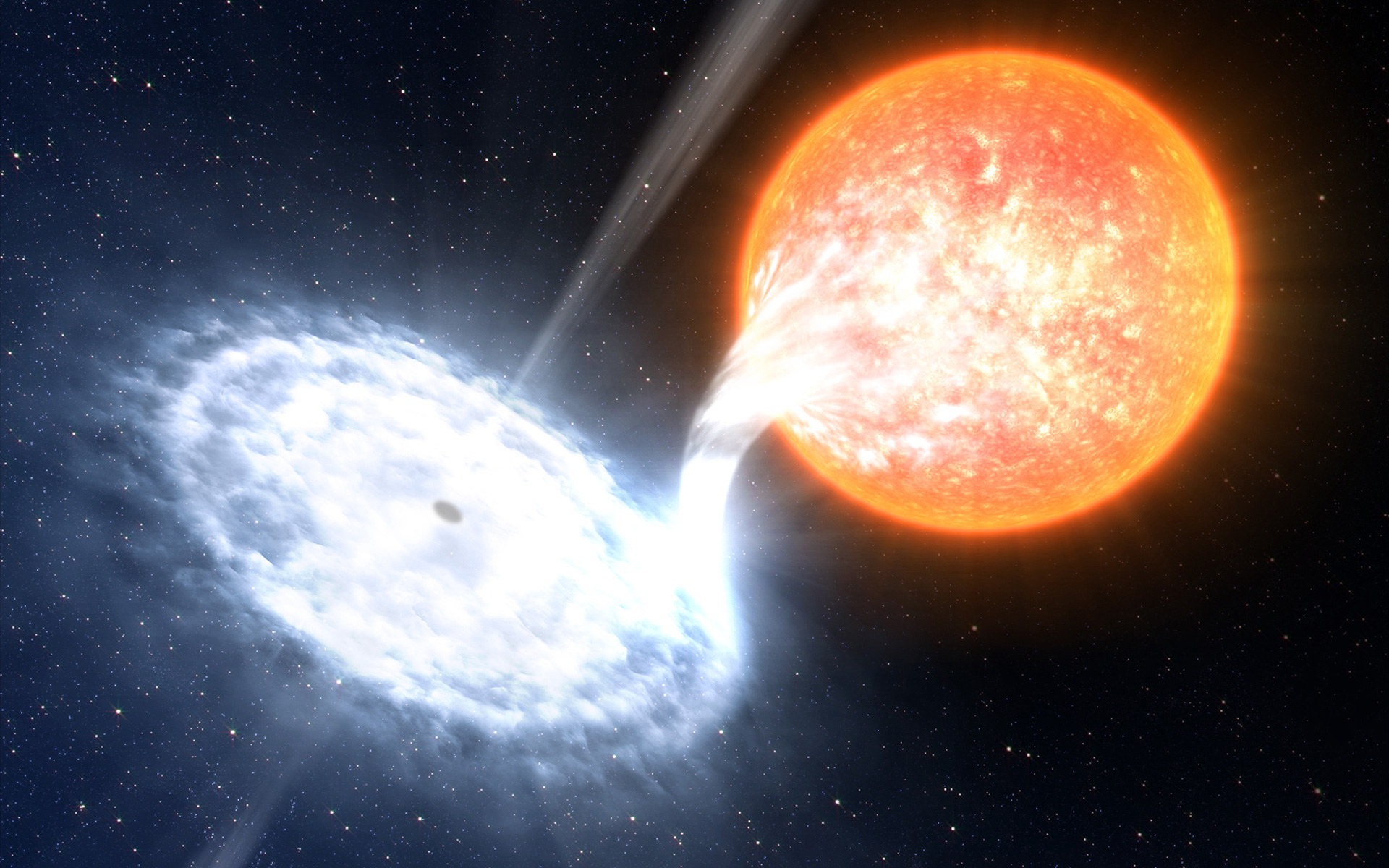A Binary Black Hole Space Wallpaper

This space wallpaper shows an artist's impression of the black holes studied by astronomers, using ULTRACAM attached to ESO's Very Large Telescope. The systems — designated Swift J1753.5-0127 and GX 339-4 — each contain a black hole and a normal star separated by a few million kilometres. That's less than 10 percent of the distance between Mercury and our Sun. Because the two objects are so close to each other, a stream of matter spills from the normal star toward the black hole and forms a disc of hot gas around it. As matter collides in this so-called accretion disc, it heats up to millions of degrees. Near the black hole, intense magnetic fields in the disc accelerate some of this hot gas into tight jets that flow in opposite directions away from the black hole. The orbital period of Swift J1753.5-0127 — just 3.2 hours — is the fastest found for a black hole. The orbital period of GX 339-4, by contrast, is about 1.7 days.
Join our Space Forums to keep talking space on the latest missions, night sky and more! And if you have a news tip, correction or comment, let us know at: community@space.com.
Get the Space.com Newsletter
Breaking space news, the latest updates on rocket launches, skywatching events and more!

Space.com is the premier source of space exploration, innovation and astronomy news, chronicling (and celebrating) humanity's ongoing expansion across the final frontier. Originally founded in 1999, Space.com is, and always has been, the passion of writers and editors who are space fans and also trained journalists. Our current news team consists of Editor-in-Chief Tariq Malik; Editor Hanneke Weitering, Senior Space Writer Mike Wall; Senior Writer Meghan Bartels; Senior Writer Chelsea Gohd, Senior Writer Tereza Pultarova and Staff Writer Alexander Cox, focusing on e-commerce. Senior Producer Steve Spaleta oversees our space videos, with Diana Whitcroft as our Social Media Editor.
